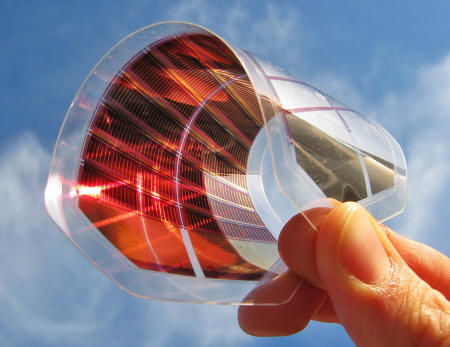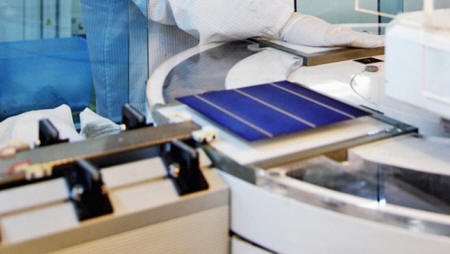|
from
Inhabitat Website
The cost of solar power has declined dramatically over the past few decades, from $40 per watt in 1977 to $0.74 per watt in 2013.
This trend is expected to accelerate as improvements in efficiency and new technologies come online. This is good news for citizens of developed countries who want to make the switch to a cleaner and increasingly cheaper energy source. The shift to solar may be most dramatic for those living in developing countries.
Thanks to inexpensive printed solar cells, 1.3 billion people currently without electricity may be able to plug in for the first time. Paper-thin solar cells require only an industrial printer to manufacture and are inexpensive to produce.
Unlike traditional panels, the printed solar cells are flexible, which eases their transportation to rural locations.
Printed solar cells have developed rapidly, rising from 3% efficiency to 20 percent in just a few years.
However, the mass production and distribution of printed solar cells is not without its obstacles.
While the panels are inexpensive to produce, an industrial printer requires a substantial capital investment to acquire. The printed panels can be vulnerable to moisture and may lead to lead contamination if broken.
Companies such as Kyung-In Synthetic are testing new coatings for the cells to alleviate these problems.
A cooperative system in which community members contribute resources and maintain democratic management of the venture may ensure sufficient start-up capital as well as the establishment of a strong local distribution network.
Despite the challenges, printed solar cells are a powerful anti-poverty tool and represent a major step towards a 100 percent renewable energy economy.
|




